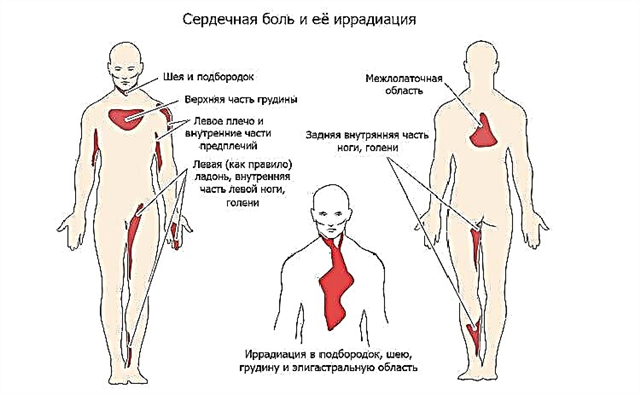The medicinal properties of aloe have been known for a long time. It is used in the treatment of many diseases, both internal organs and skin. Due to the ability to quickly penetrate the skin and into the blood vessels, the effect of using the plant can be observed in the coming hours. Aloe for a cold is prepared according to recipes that have been proven over the years, which allows you to relieve a person of the symptoms of rhinitis and prevent the development of complications.
 The composition of the plant has not yet been fully studied, but the available information makes it possible to successfully use it in the fight against infectious or vasomotor rhinitis.
The composition of the plant has not yet been fully studied, but the available information makes it possible to successfully use it in the fight against infectious or vasomotor rhinitis.
With an allergic origin of the common cold, it is better to refuse medicines based on aloe.
The juice is contained in the fleshy part of the leaf, surrounded by the skin. The plant contains:
- vitamin C, necessary to strengthen the immune defense;
- kakhetin, the action of which is aimed at stabilizing intercellular connections in the walls of blood vessels;
- tannins - have an astringent effect, control blood clotting and provide an anti-inflammatory effect;
- flavonoids - fight pathogenic microorganisms, prevent the penetration of carcinogenic substances into the body.
The composition of the plant is supplemented with organic salts, trace elements, carbohydrate compounds and enzymes. The complex of medicinal components allows:
- reduce swelling of the mucous membrane;
- prevent the spread of infection and inflammation;
- accelerate the regeneration of the mucous membrane;
- restore the function of cilia of the epithelium. This makes it possible to timely ensure the cleaning of the nasal passages from mucus with toxins, allergens and dust particles;
- eliminate infectious pathogens;
- reduce mucus production;
- strengthen local immunity.
In the area of the nasal passages, there are many blood vessels, therefore, after using the agave, its components are quickly absorbed into the bloodstream. The bactericidal property of aloe ensures the fight against microbes, as a result of which intoxication and the severity of inflammation are reduced. If infectious microorganisms are the cause of nasal congestion, the plant acts directly on the cause of rhinitis, thereby speeding up recovery.
Separately, it is worth mentioning allantoin - this is a substance whose action is to reduce the inflammatory response and the intensity of pain. Allantoin has antioxidant properties, which makes it possible to cleanse cells of toxic waste products.
Restriction on use

Before preparing a medicinal product based on aloe, it is necessary to take into account the presence of contraindications to the use of plant juice:
- pregnancy. The active use of such funds can lead to bleeding, premature birth or spontaneous abortion;
- lactation period;
- severe diseases of the kidneys, cardiovascular system, digestive tract;
- varicose veins;
- allergic reactions;
- age up to 3 years;
- the first days of a viral disease.
If a person has never used aloe juice for medicinal purposes, an allergic test must be performed. It involves applying the allergen to the back of the wrist. The reaction should be assessed after 12 hours. If swelling, redness, itching, or rashes appear, the allergic reaction is considered positive.
For the test results to be reliable, do not wet the area of application of juice and comb, including the cuff of a shirt or sweater, for 12 hours.
In addition, it must be remembered that stimulating cell growth does not always have a positive effect on the body. In the presence of benign or malignant formations in the body, especially in the nasopharynx area, active cell proliferation can lead to the progression of cancer.
In this regard, back in 2002, a decree was issued prohibiting the manufacture of laxatives that contain aloin (a component of aloe juice).
How to preserve the medicinal properties of the juice?
To make drops of aloe juice, you first need to collect it correctly. The juice is contained in the pulp of the plant, so you need to cut off the leaf and leave it in a dark place at a temperature not exceeding 5 degrees. Nowadays, you can use a refrigerator.
This manipulation makes it possible to accelerate the production of biogenic stimulants, which are the plant's protective response to damage. Refrigeration should be 12 days. If you do not follow these recommendations, the healing properties lose some of their power.
After the expiration date, peel the leaf and crush the pulp with a spoon. Then you need to filter the juice through cheesecloth. The juice is also kept in the refrigerator.
Therapeutic approach for rhinitis
Undiluted juice is used in rare cases when it is necessary to have a powerful antimicrobial effect. At the same time, high doses are prescribed only if the person has already used aloe and he did not have an allergy to the plant.
Treatment can be supplemented with bee products, vegetable oil, onions and garlic. The combination of these components allows you to get rid of a cold in the shortest possible time. For dilution of medicines, only distilled or boiled water is used.
Medicines are applied to the nasal mucosa only after it has been cleansed.
Solutions with aloe for rinsing
For prophylactic as well as therapeutic purposes, you can use a solution for washing the mucous membrane with the addition of aloe juice. There are many recipes with herbs, garlic and lemon, here are a few of them:
- to prepare a healing solution, you need an infusion of garlic and aloe juice. First, you need to clean, chop 5-7 garlic cloves, pour boiling water (1 liter), close the container and wait 15 minutes. Next, you should add the juice of the plant, taking it twice the volume of the infusion. The prepared solution can be used for frequent rinsing of the nasal cavities;
- Aloe can be combined with a variety of herbs such as chamomile and eucalyptus. To prepare the solution, you need 15 g of herbs and 15 ml of juice. The herbs need to be poured with boiling water (120 ml), left for an hour and filtered through several layers of gauze. Then, adding juice, you can begin the rinsing procedure;
- the leaves of the plant can be infused with vodka. To do this, pour the crushed leaves with vodka (700 ml), leave for 10 days and use to rinse the nasal cavities or instill the nose. The medicine can be used once a day.
Aloe drops
When instilling a nose, sneezing is possible - this is a defensive reaction to irritation of the mucous membrane.
For the preparation of medicines, it is better to take a plant older than three years. It should be cleaned, squeezed out, and a healing agent should be prepared. If it is necessary to store the juice for a long period of time, it must be kept in the refrigerator.
There are different recipes for making medicines with aloe. The simplest is to dilute the juice with water 1: 1 (for adults) or 1: 3 (for children). We drip into the nose three times a day, four drops. The duration of the therapeutic course is 8-9 days.
At the pharmacy, you can buy ready-made aloe tincture or prepare it yourself. Aloe juice is poured with vodka 1: 1 and infused for 10 days. The resulting product must be filtered and diluted with water 1: 4. Here are some more recipes for plant juice:
 juice and honey are mixed in equal volume;
juice and honey are mixed in equal volume;- 15 g of celandine herb must be poured with boiling water (260 ml), leave to infuse for an hour and combine with juice (1: 1);
- add 3 drops of onion juice to 15 ml of plant juice, mix thoroughly and drip five drops into the nose twice a day;
- you can add aloe juice to carrot juice (2: 1);
- a pinch of sea salt can be added to the mixture of Kalanchoe and aloe juices. Bury your nose three drops three times a day;
- in an equal volume you need to mix aloe, dissolved honey, rosehip oil and eucalyptus oil (2 drops). In the resulting mixture, it is necessary to moisten cotton turundas and insert into the nasal passages for 20 minutes. In addition, the agent can be used to treat the nasal mucosa or nasal instillation, two drops twice a day;
- nasal drops can be prepared from garlic juice, aloe. To do this, you need to mix the ingredients 1: 5 and dilute with water twice. Dripping once a day, one drop at a time;
- Aloe nasal drops can be prepared with the addition of garlic, melted honey. First, you need to peel 2 garlic cloves, chop them, pour boiling water (220 ml) and leave to infuse for 4 hours. Then you need to add honey, aloe. All ingredients are 1: 1: 1 ratio. After stirring the mixture, you can drip three drops into the nasal nostrils every 2 hours;
- honey must be dissolved in water 1: 1 and aloe juice added 1: 1. Drip into the nose, two drops three times a day;
- you can prepare drops with onions. To do this, peel the onion, chop it and filter the juice through cheesecloth. Then it is mixed with aloe juice 1: 2, diluted twice with water. Treatment with this remedy in childhood is not carried out due to the powerful irritating effect;
- a combination of lemon, honey and aloe will provide a pronounced antibacterial and immunomodulatory effect. To prepare the medicine, it is enough to mix the ingredients in an equal volume and drip 4 drops of the nasal passages. The procedure is repeated three times a day. If it is necessary to use a healing agent for a child, dilution with water 1: 3 is required;
- if rhinitis is accompanied by the appearance of dry crusts in the nasal cavities, it is recommended to use olive oil with aloe. Due to the healing properties of natural ingredients, the mucous membrane is moistened, protected and the crusts softened. They become less hard and are easily removed to the outside. To prepare a useful product, you must mix the ingredients in a 3: 1 ratio (oil: aloe). You can use a water bath to warm up the mixture. Dripping four drops three times a day.
Do not forget that aloe is not a panacea for all diseases. In addition to using this plant for a cold, it is recommended to increase the drinking regimen, take vitamins and avoid hypothermia.
If necessary, treatment should be supplemented with pharmaceuticals such as vasoconstrictor or antihistamine nasal drops. In the absence of effect from home treatment, it is recommended to consult a doctor.

 juice and honey are mixed in equal volume;
juice and honey are mixed in equal volume;

